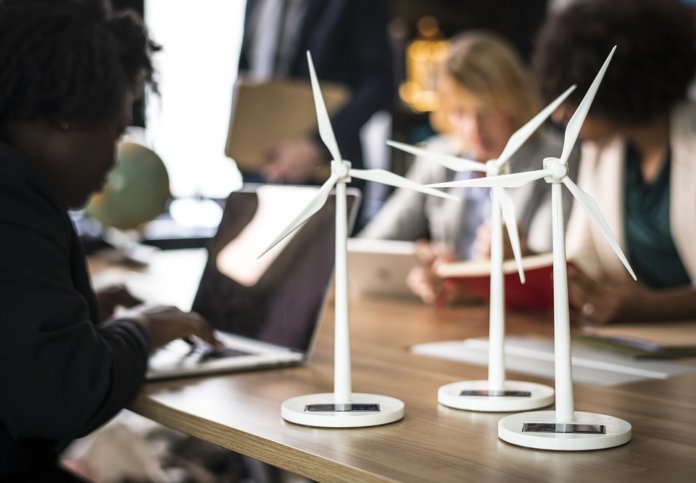Research and development (R&D) expenses among the world’s top 10 wind turbine OEMs have more than doubled in the last four years, reaching EUR 1.6 billion in 2018. This figure is expected to increase to EUR 2.3 billion by 2023, according to Wood Mackenzie Power & Renewables’ “Next-Generation Wind Turbine Models” report.
“Turbine OEMs have accelerated R&D investments in next-generation turbine platforms, battling against new unit sales margin compression and the market’s need to further reduce wind energy’s levelized cost of electricity (LCOE),” explains Shashi Barla, principal analyst at Wood Mackenzie Power & Renewables. “Turbine technology investments are central to lowering LCOE below the EUR 15-20/MWh mark and mitigating developer/off-taker increased exposure to merchant power prices.
“Offshore wind turbine sizes are expected to sit at around 20 MW by 2030,” Barla continues. “The cost of technology, balance-of-plant equipment and installation of vessels to handle such large components will play a crucial role in this increase. Turbine OEMs must work in tandem with the supply chain to ensure these technologies can be developed and deployed cost-effectively.”
According to the report, wind turbine OEMs are expected to continue their frantic pace of new product introductions, including 7 MW to 8 MW onshore turbines with 200+meter rotors expected to be available by 2025 and 20+MW offshore turbines with 280+meter rotors possible before 2030.
“Turbine rotor diameter remains the central product differentiator for turbine OEMs,” adds Barla. “However, the knock-on impact of blade enlargement requires continued innovation on rotor, tower and drive train technologies in order to bend cost/performance curves. The race to launch a larger turbine than competitors continues, with recent product announcements from SGRE’s SG 5.8-170 surpassing Vestas’ V162-5.6 turbine.”
China, India and the U.S. are expected to lead the market through 2028, the report predicts.
“Ultra-low-wind IEC IV class wind turbines, within the 3.X MW class, are becoming mainstream platforms in China,” Barla says. “New transmission lines in high-wind provinces Inner Mongolia and Xinjiang are alleviating grid congestion, therefore enabling new wind projects to proceed. OEMs will deploy the up-rated IEC class turbines in these provinces.
“There’s strong interest from western OEMs in India as domestic OEMs face challenges. Most OEMs are expected to migrate to the 3.0 MW configuration with 145- to 155-meter rotors within the next 12 months.
“Scandinavian markets have been early adopters of the latest-generation wind turbine technologies. Within the region, Finland was the first country to test the latest-generation technologies from Vestas, Nordex and Enercon. We expect corporate PPA market development to accelerate the adoption of such technology,” says Barla.
Further, according to the report, over 90 new onshore and offshore turbines are expected to be launched within the next five years by the top 10 leading OEMs.
“Mass migration to a product platform development approach will increase the number of new product variants customized to specific wind regimes,” says Barla. “Lower product development costs, flexibility in component sourcing, stronger supplier relationships and increased economies of scale will result in a more cost-effective approach to mass customization. This will address the global procurement needs of developers and asset owners.”
More on the report can be found here.




